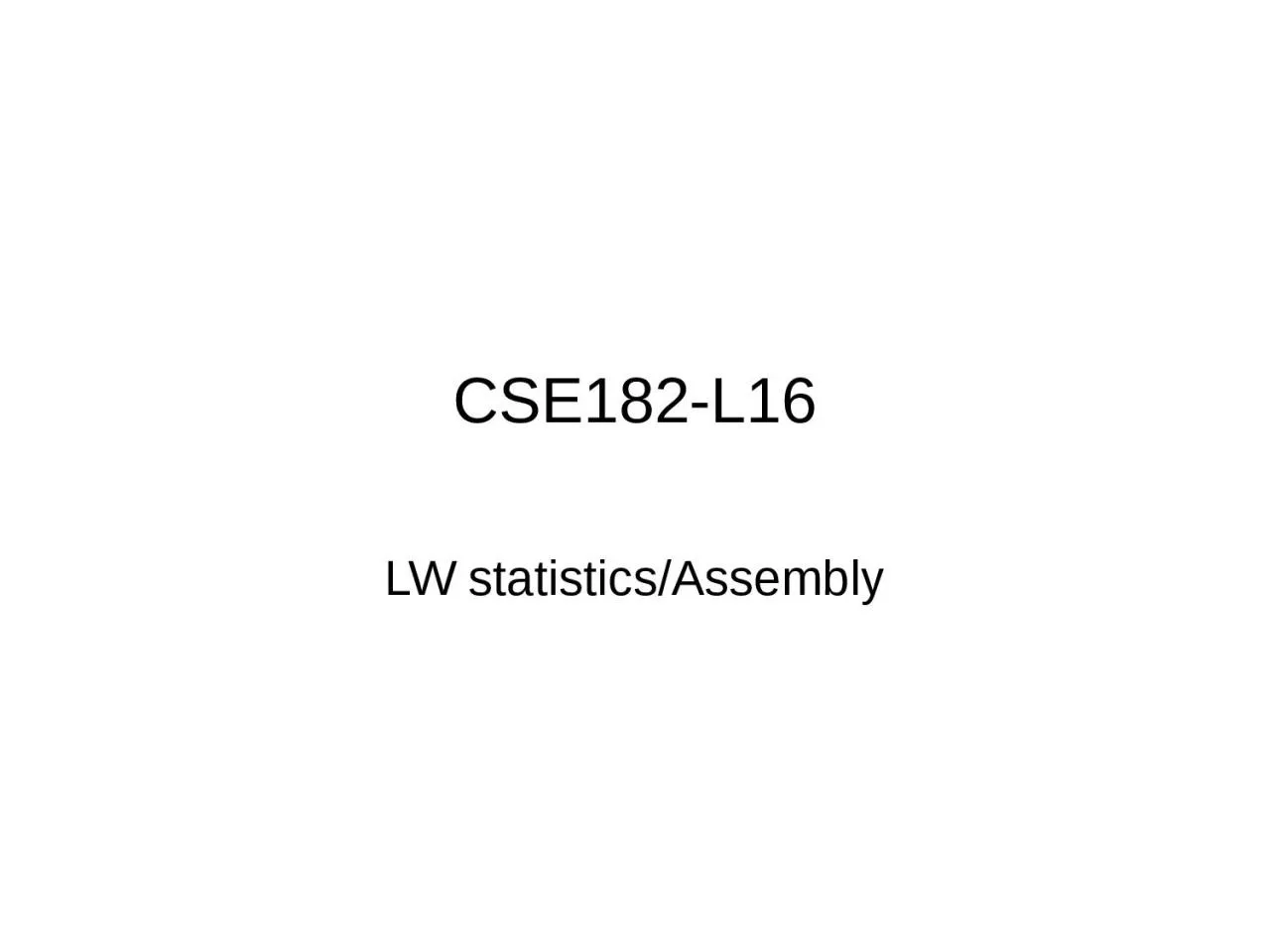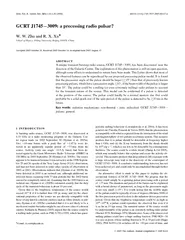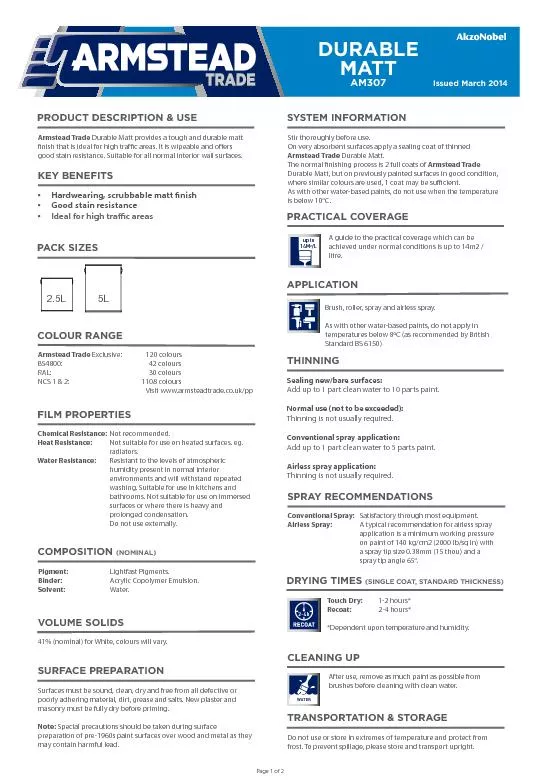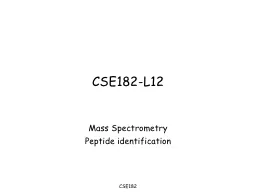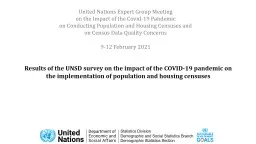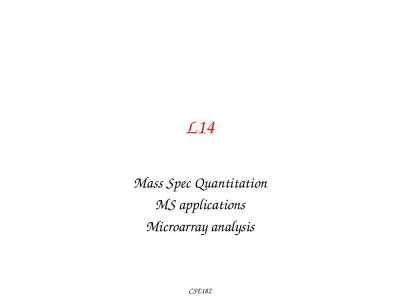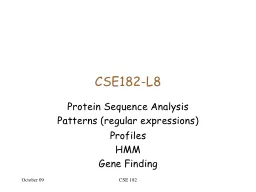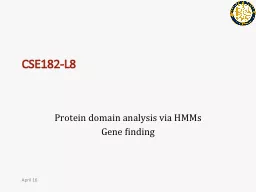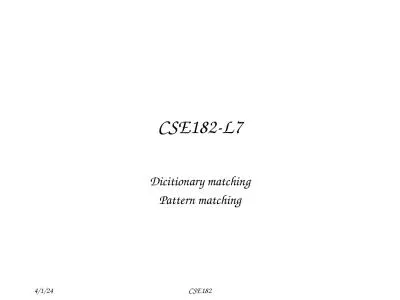PPT-CSE182-L16 LW statistics/Assembly
Author : miller | Published Date : 2024-02-09
Silly Quiz Who are these people and what is the occasion Genome Sequencing and Assembly Sequencing A break at T is shown here Measuring the lengths using electrophoresis
Presentation Embed Code
Download Presentation
Download Presentation The PPT/PDF document "CSE182-L16 LW statistics/Assembly" is the property of its rightful owner. Permission is granted to download and print the materials on this website for personal, non-commercial use only, and to display it on your personal computer provided you do not modify the materials and that you retain all copyright notices contained in the materials. By downloading content from our website, you accept the terms of this agreement.
CSE182-L16 LW statistics/Assembly: Transcript
Download Rules Of Document
"CSE182-L16 LW statistics/Assembly"The content belongs to its owner. You may download and print it for personal use, without modification, and keep all copyright notices. By downloading, you agree to these terms.
Related Documents

